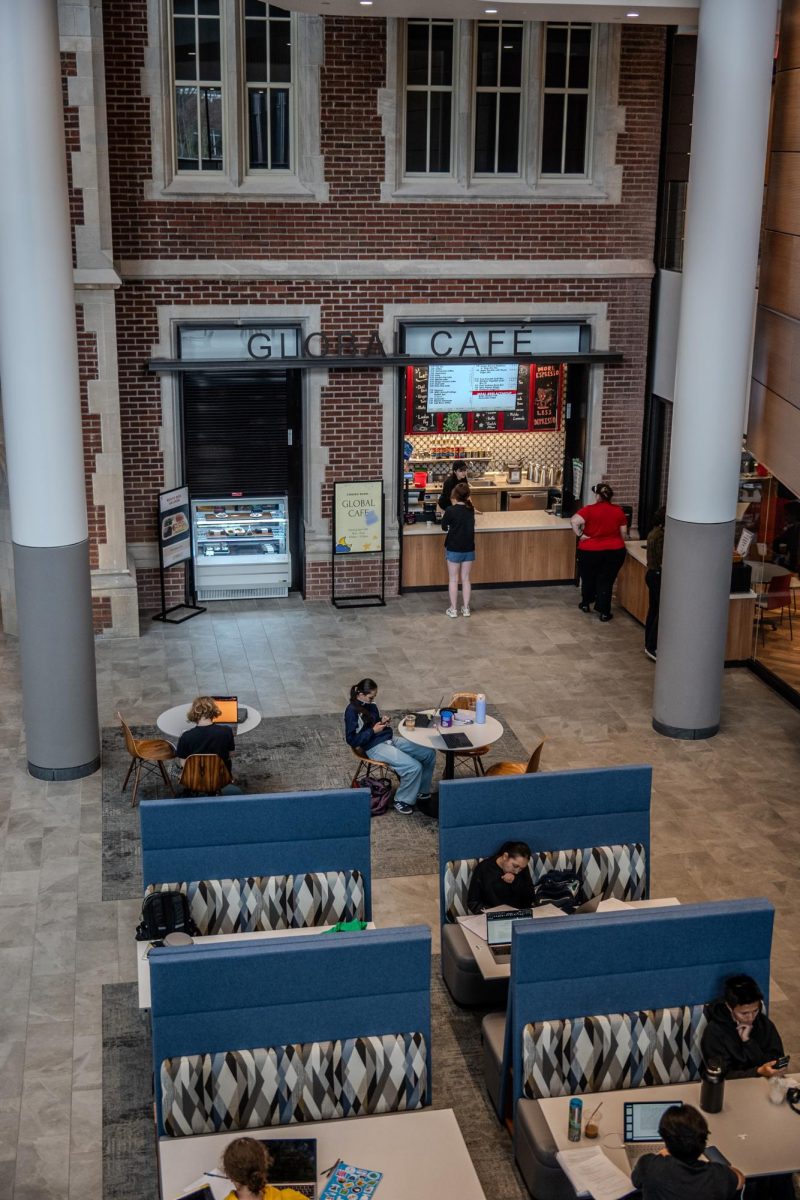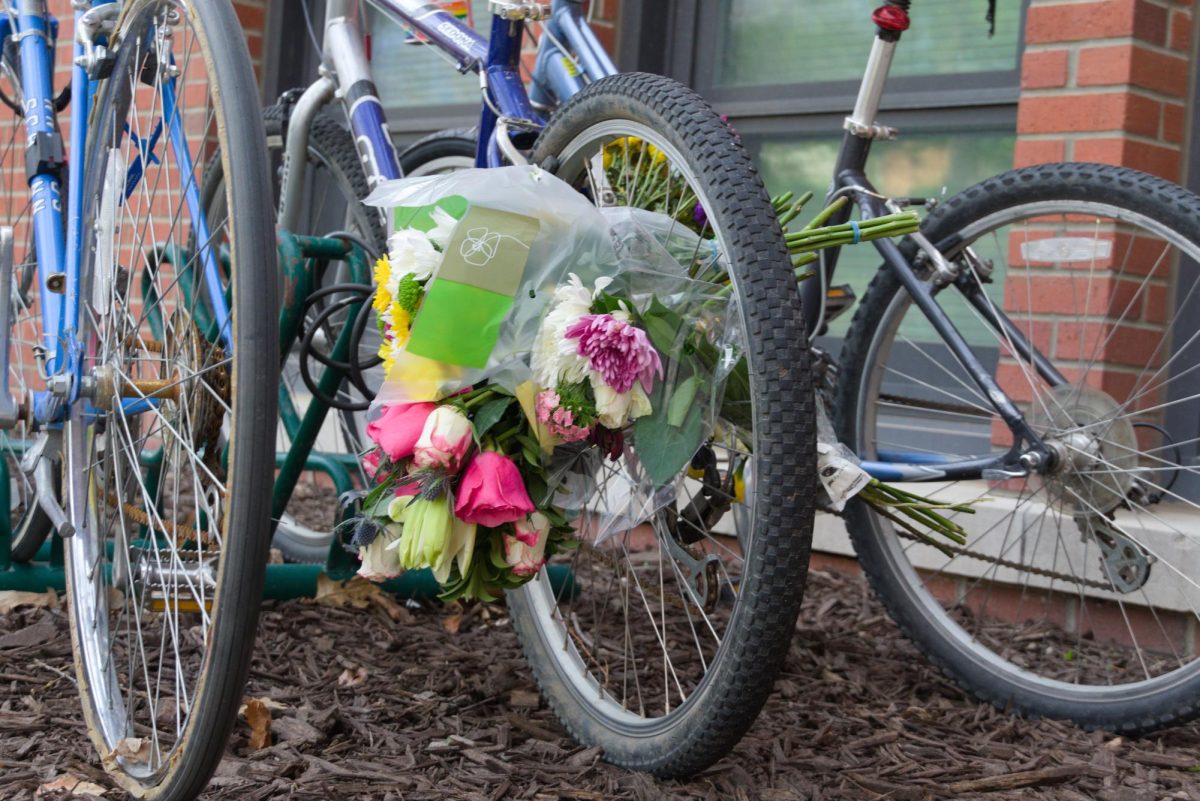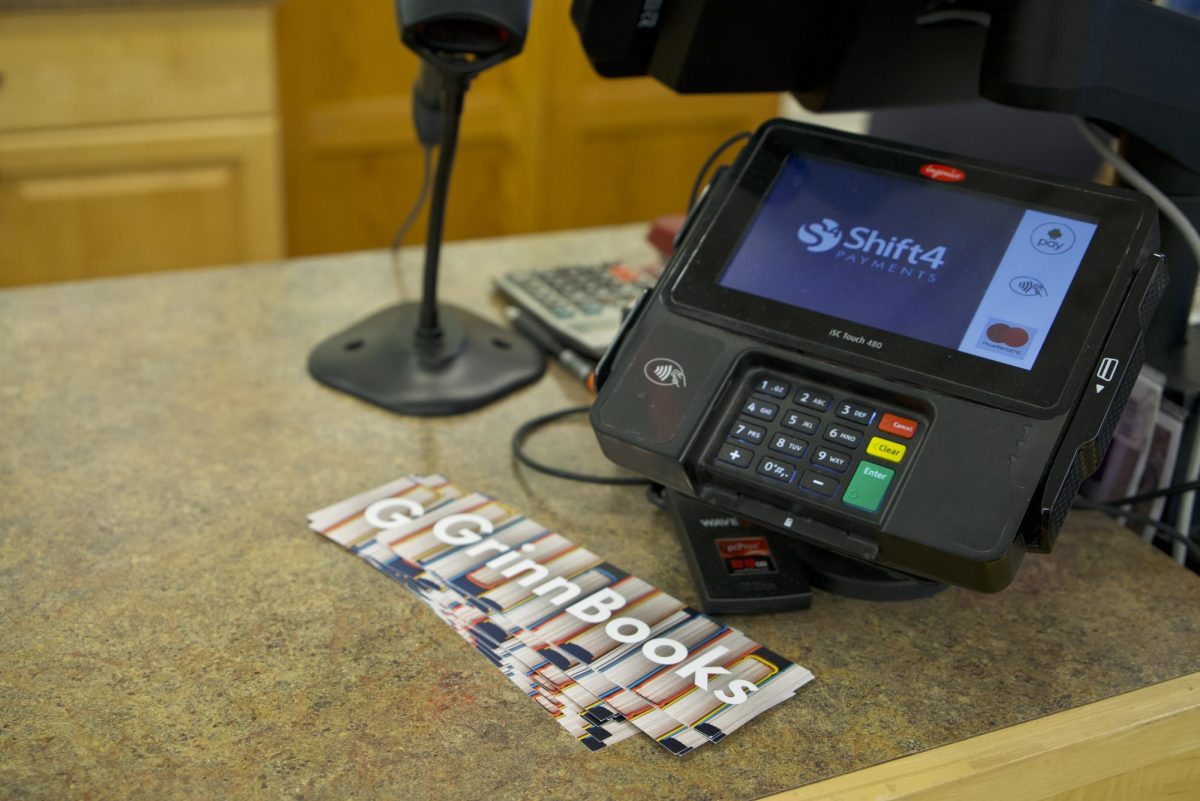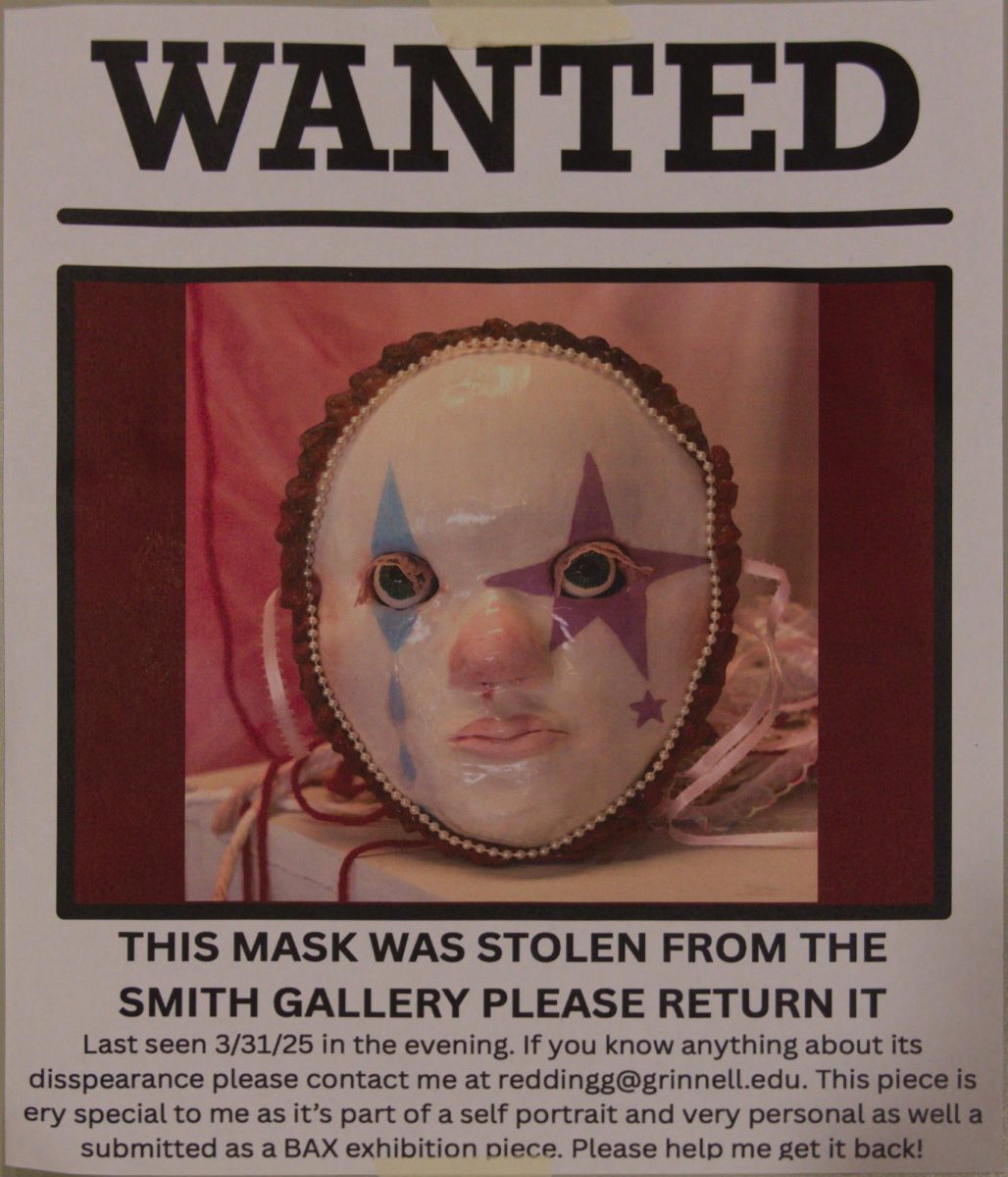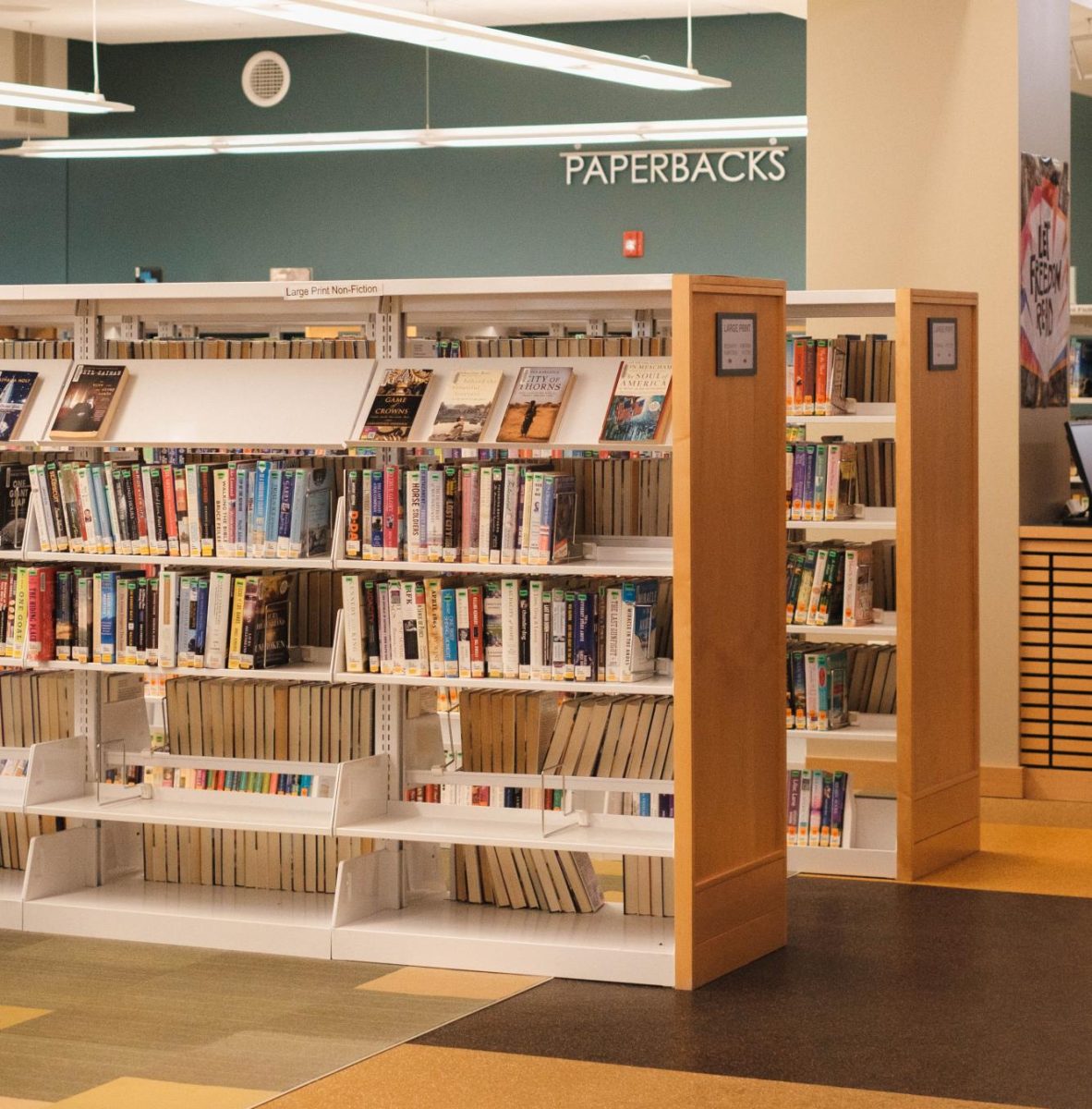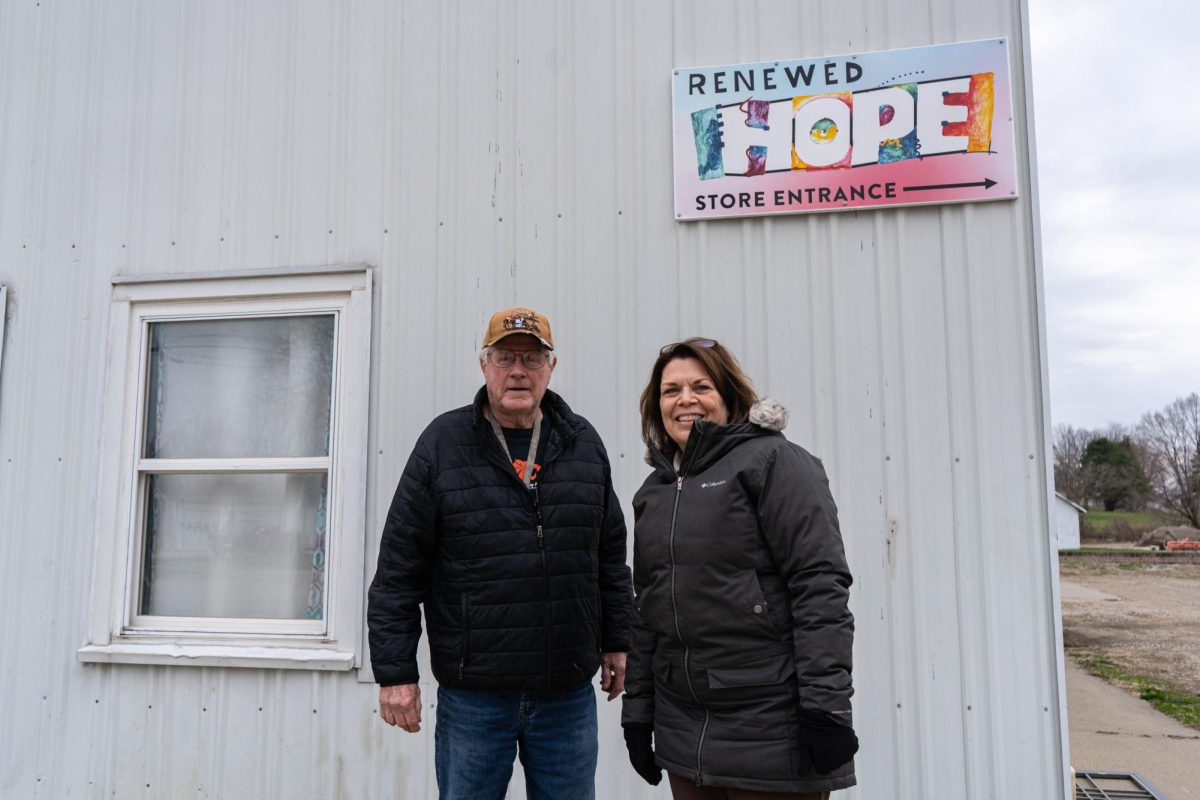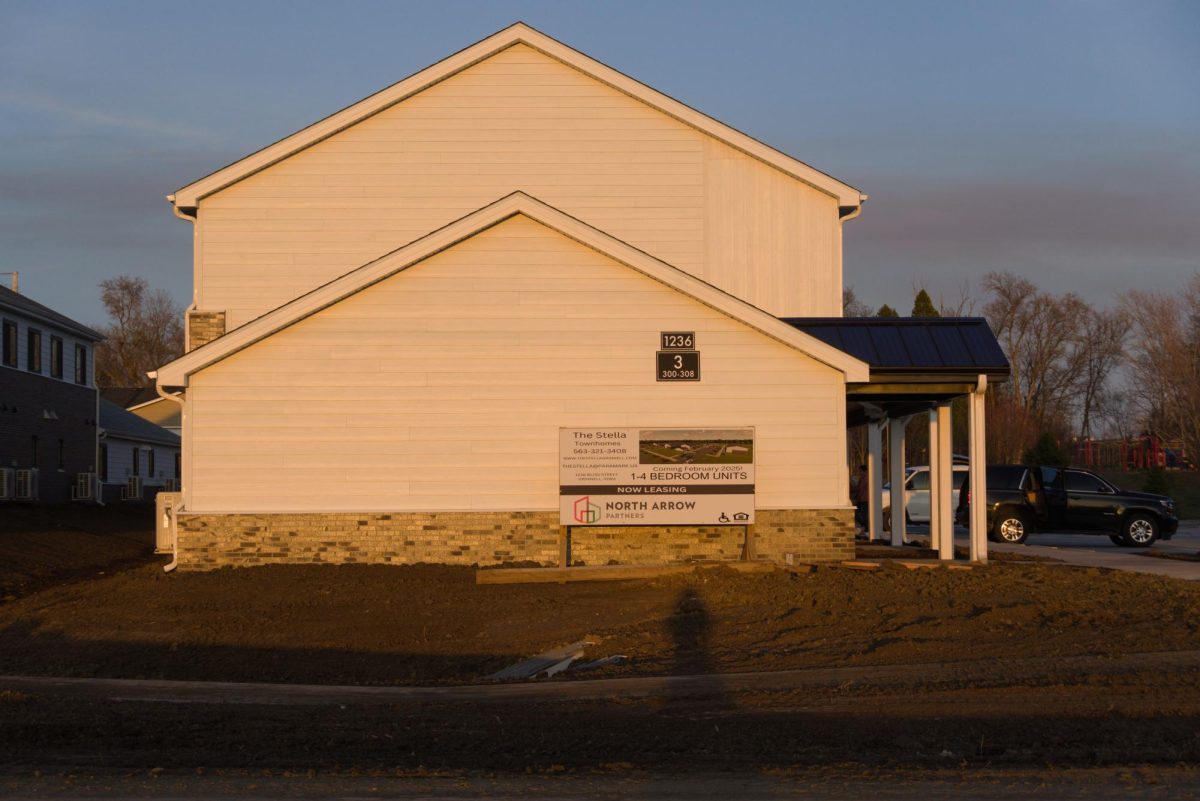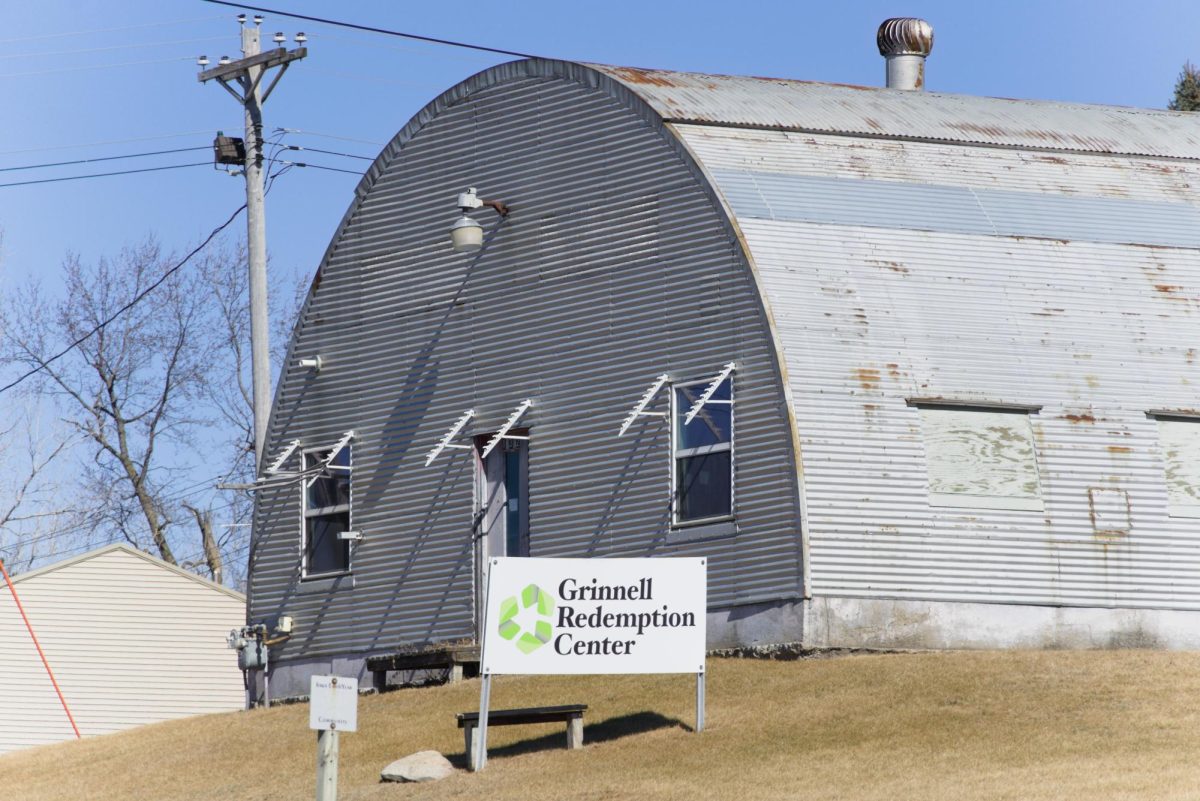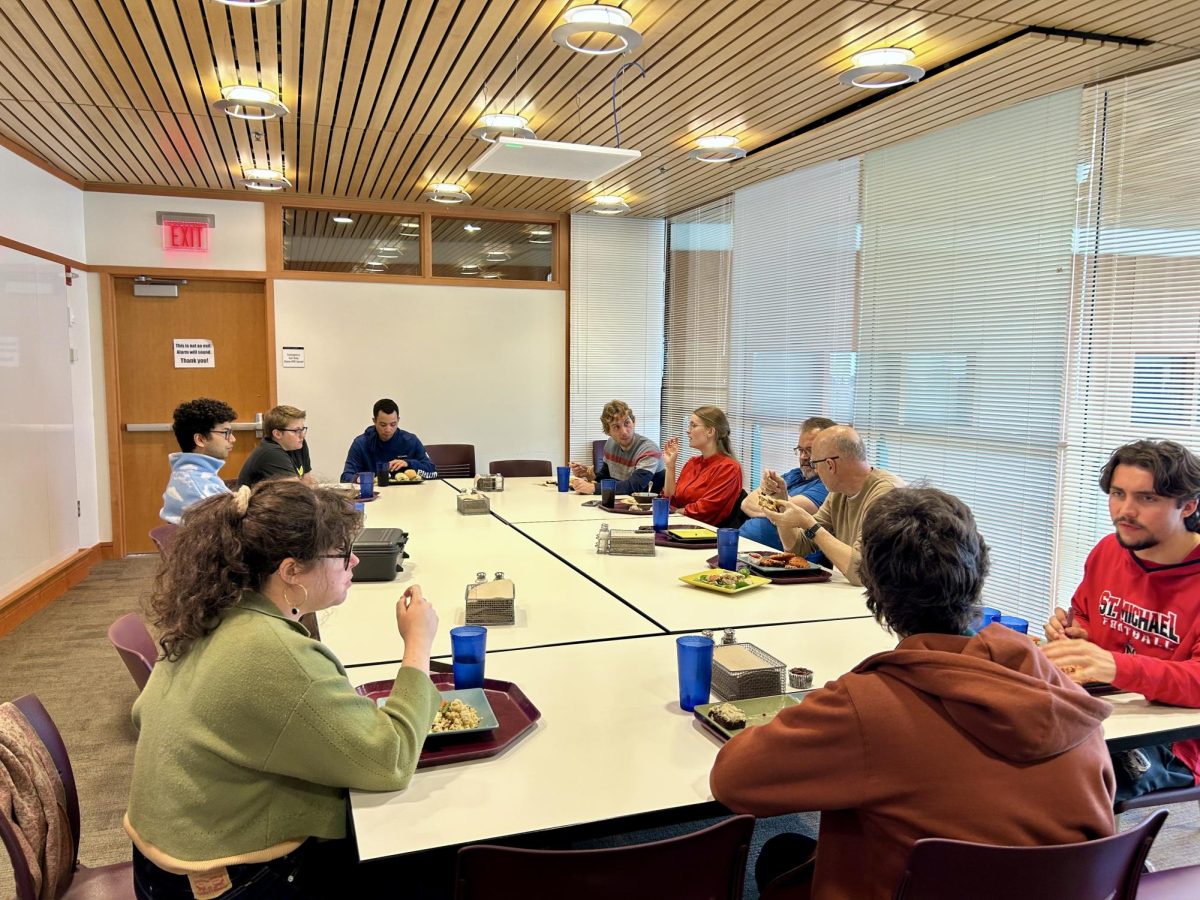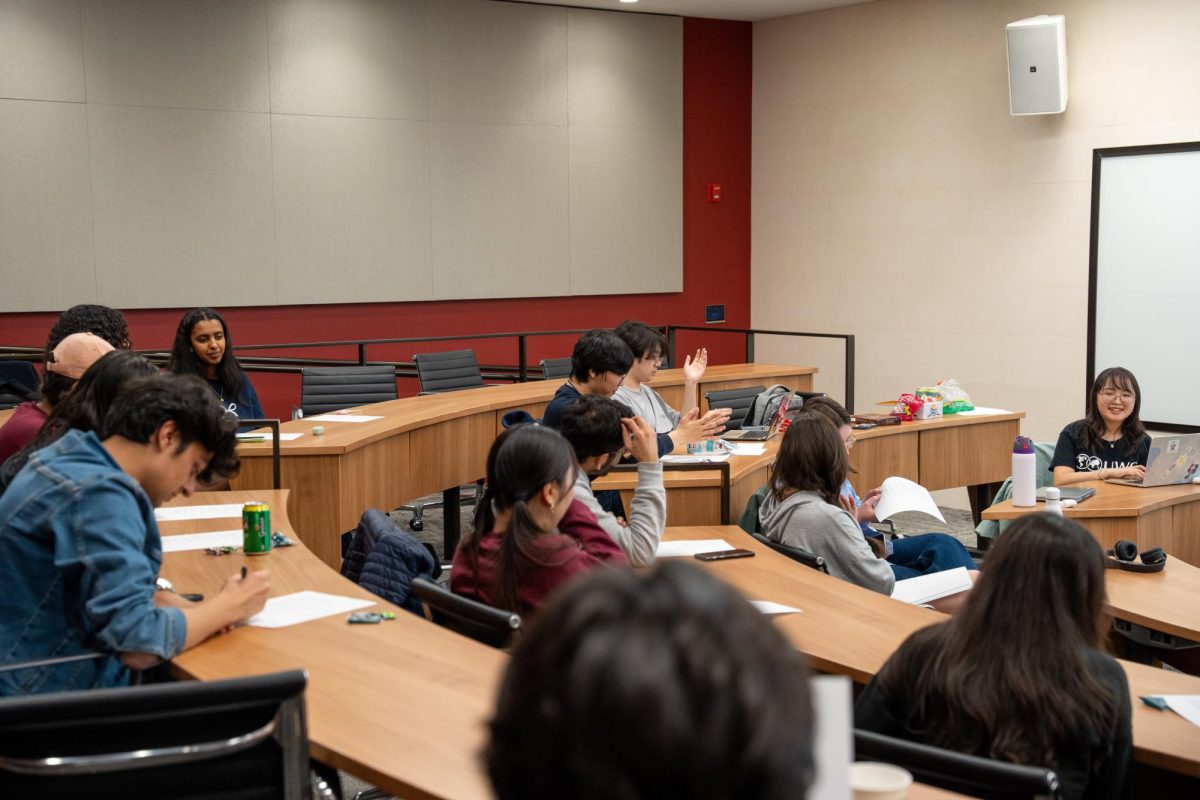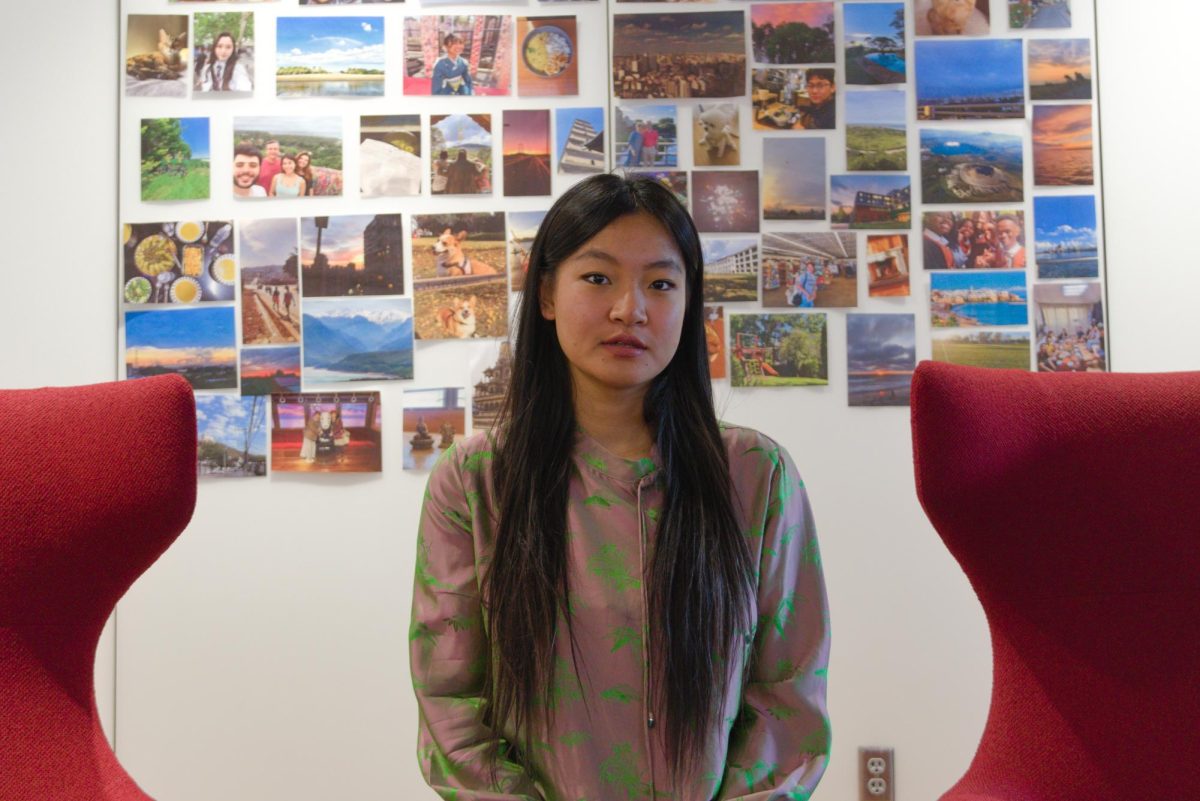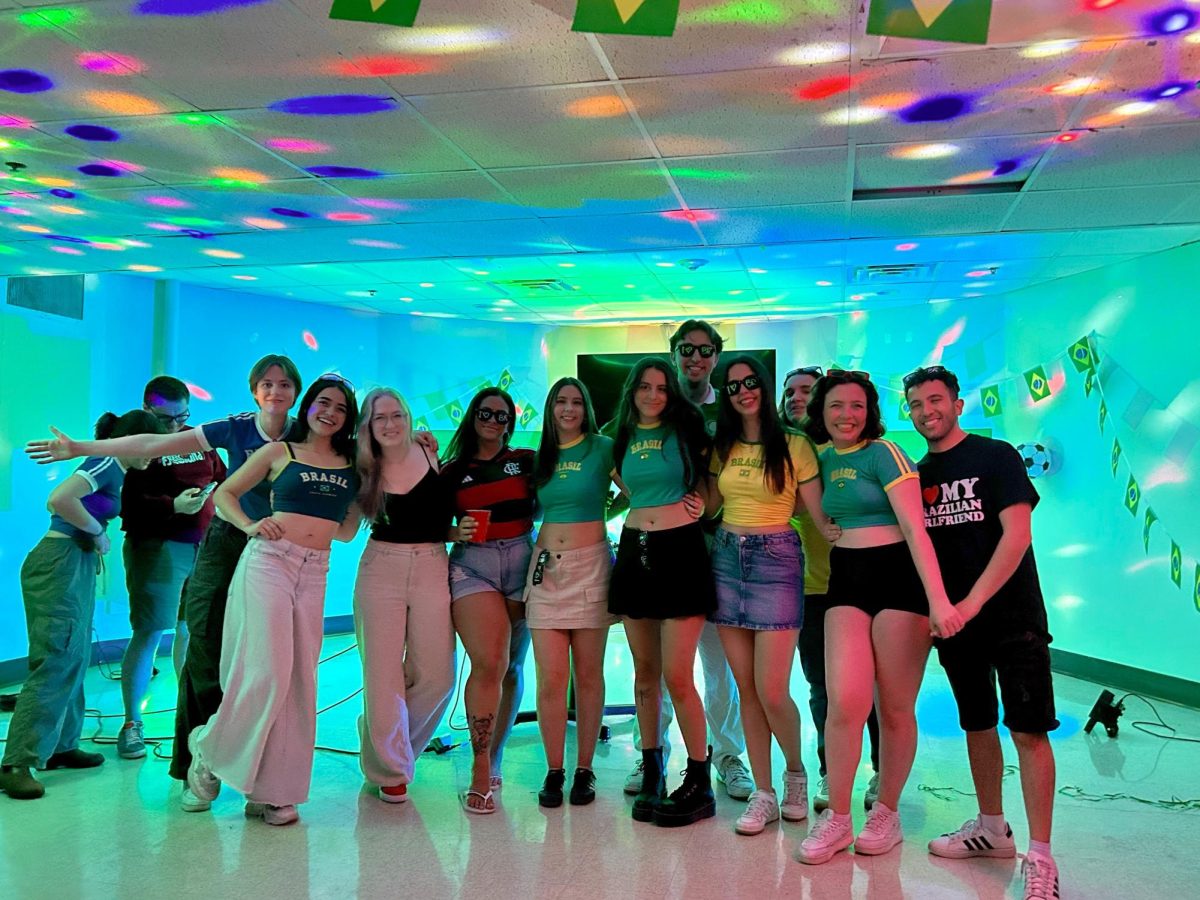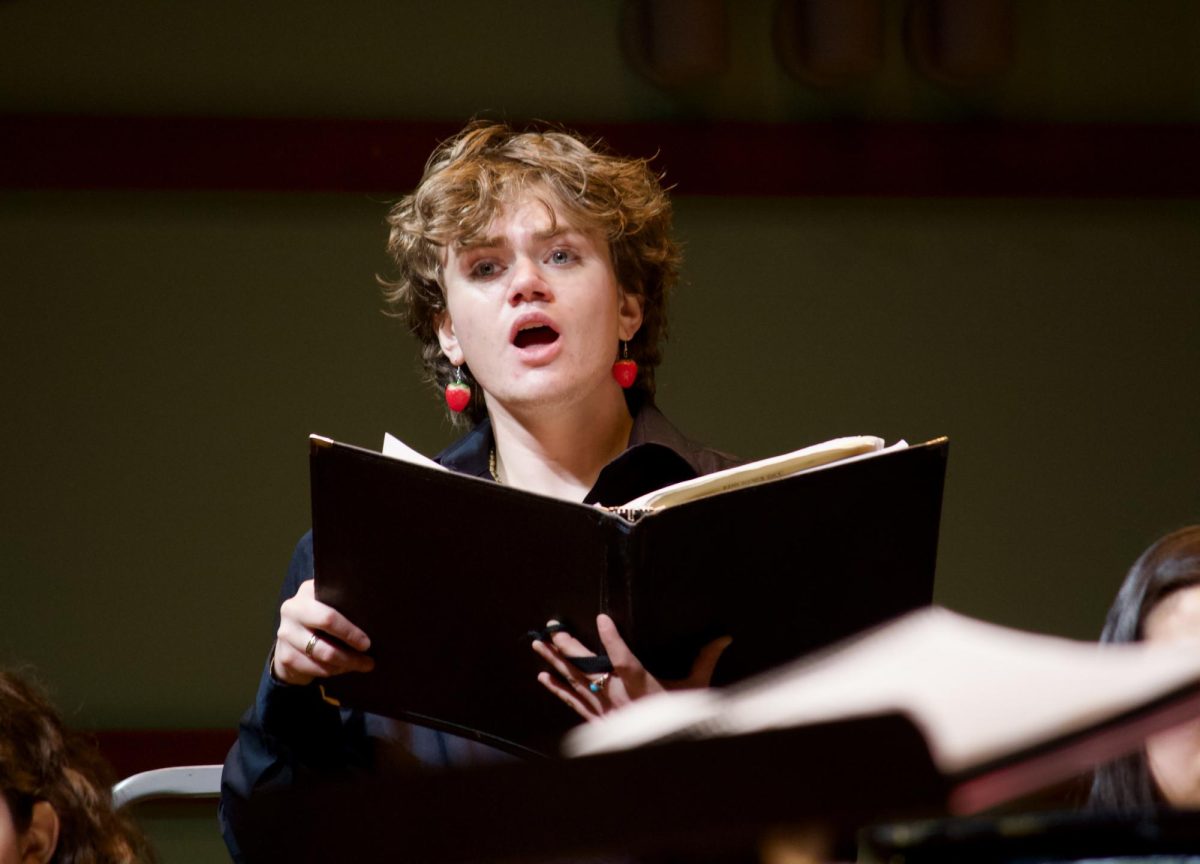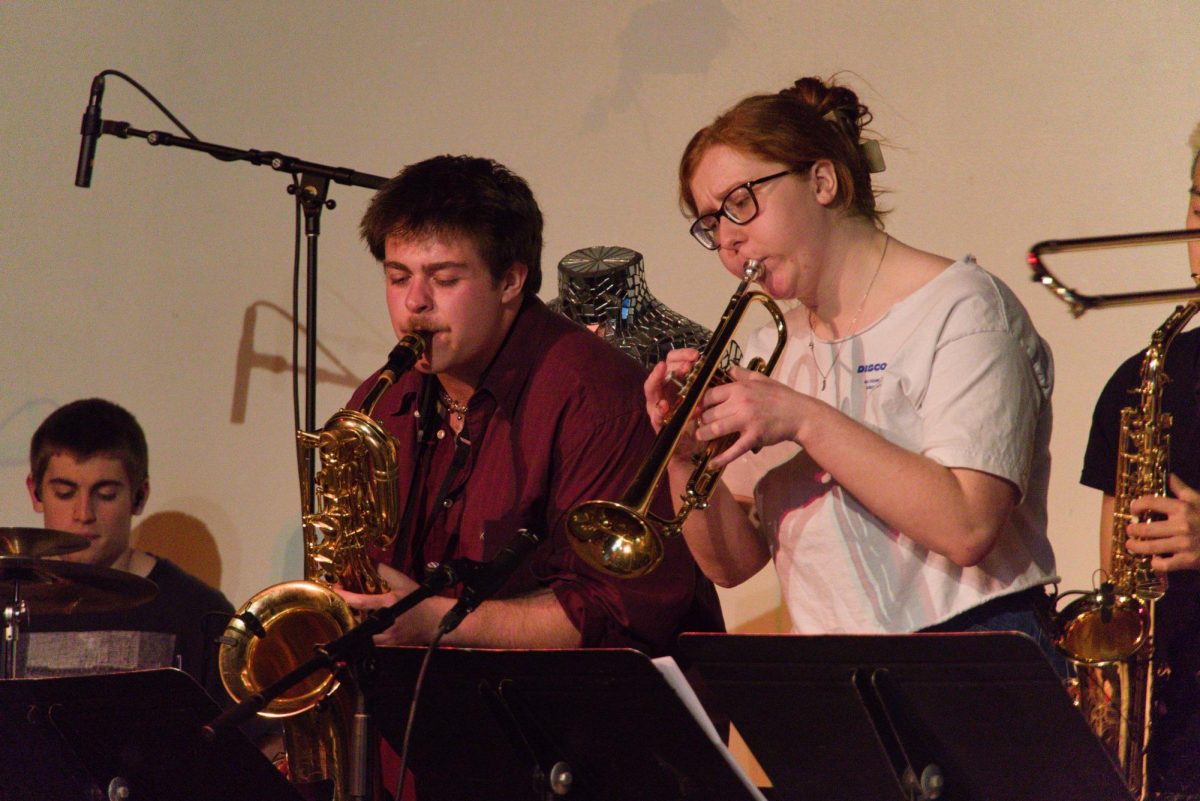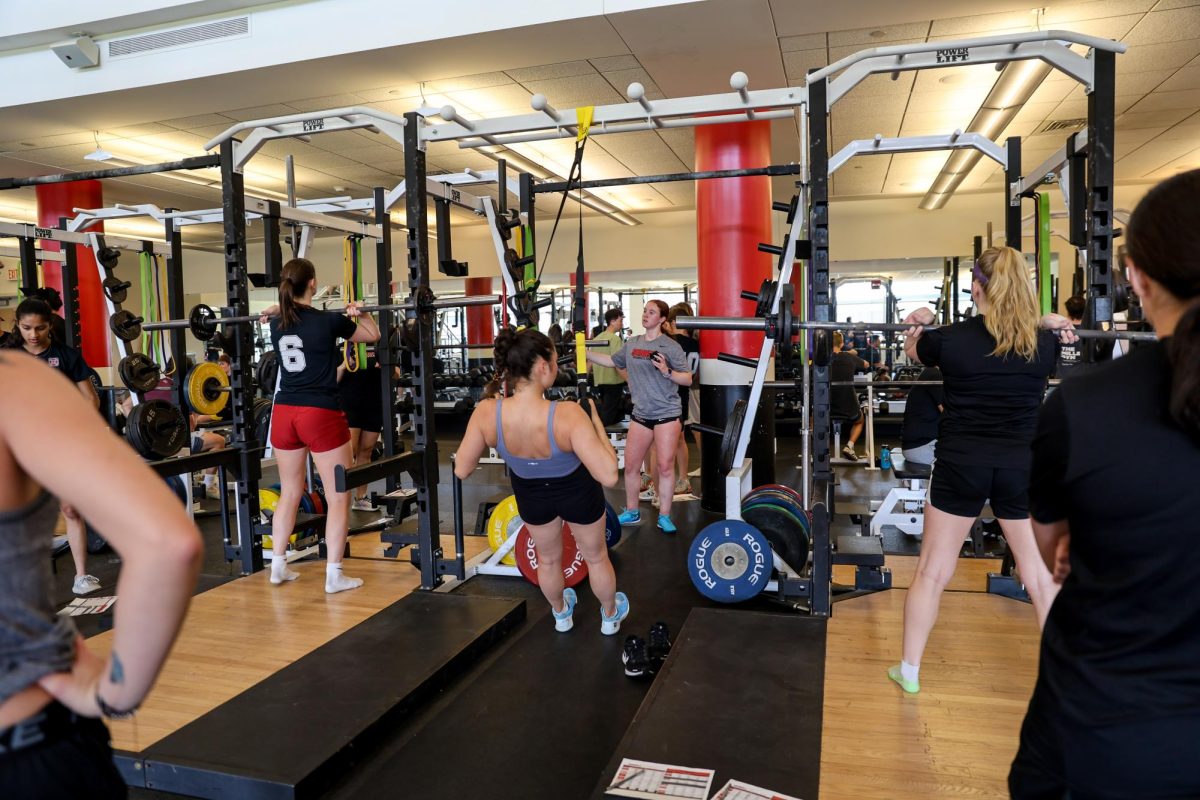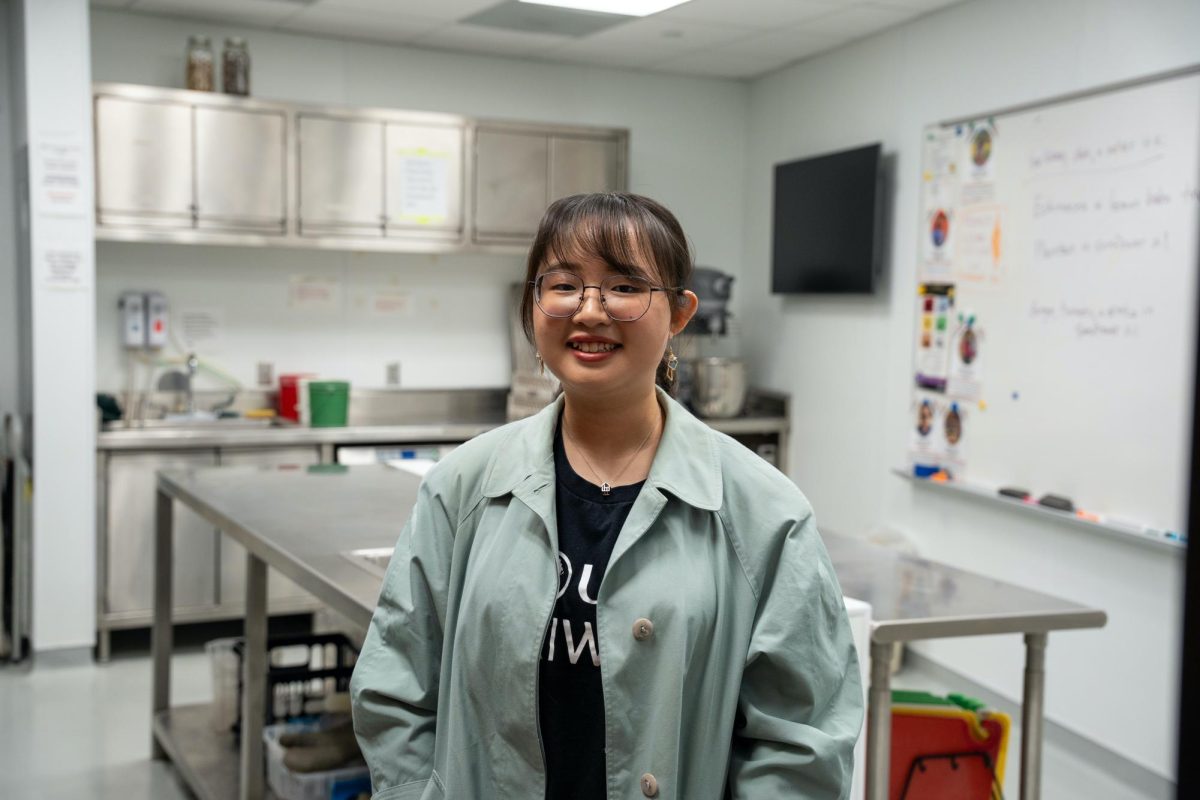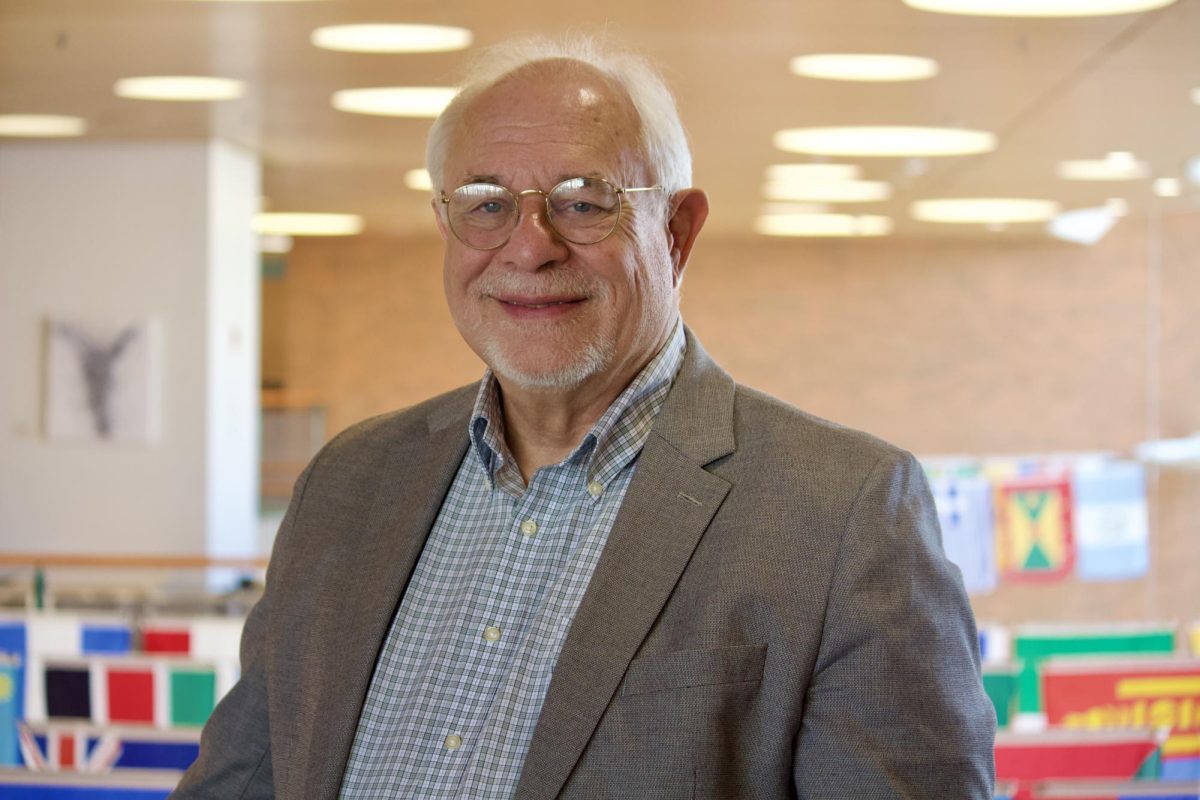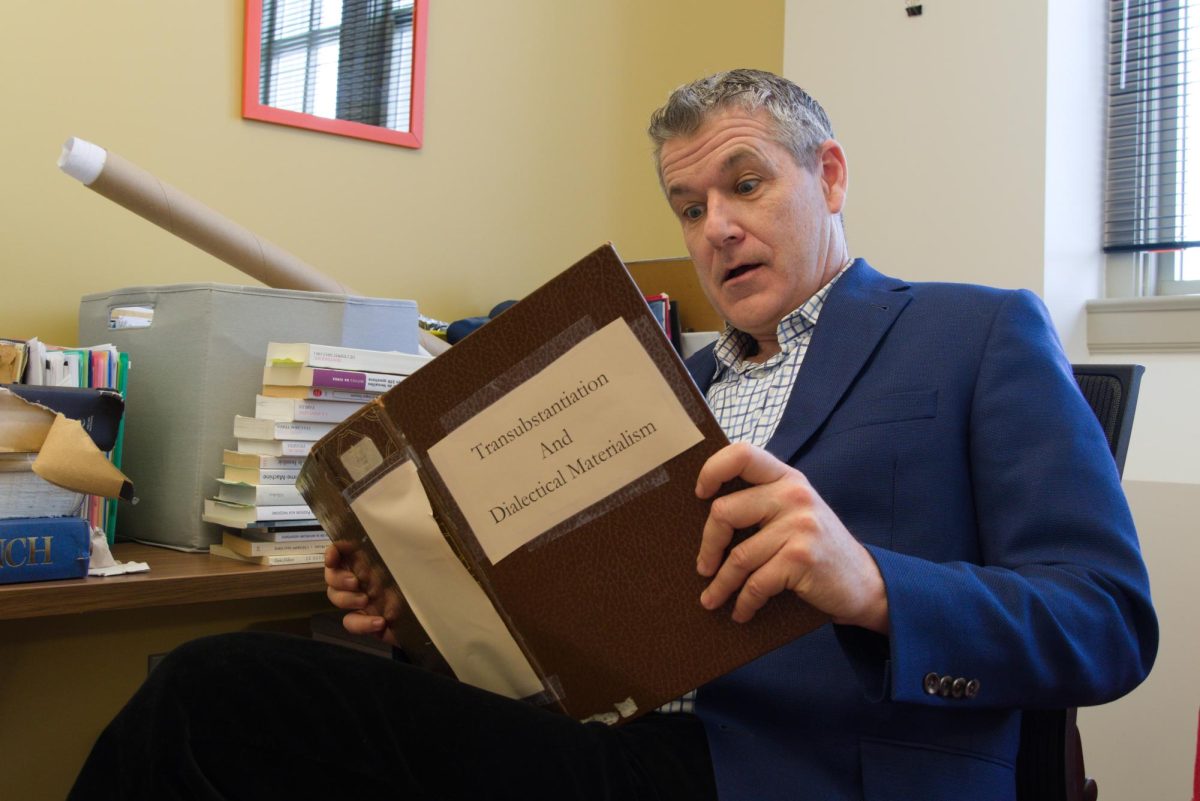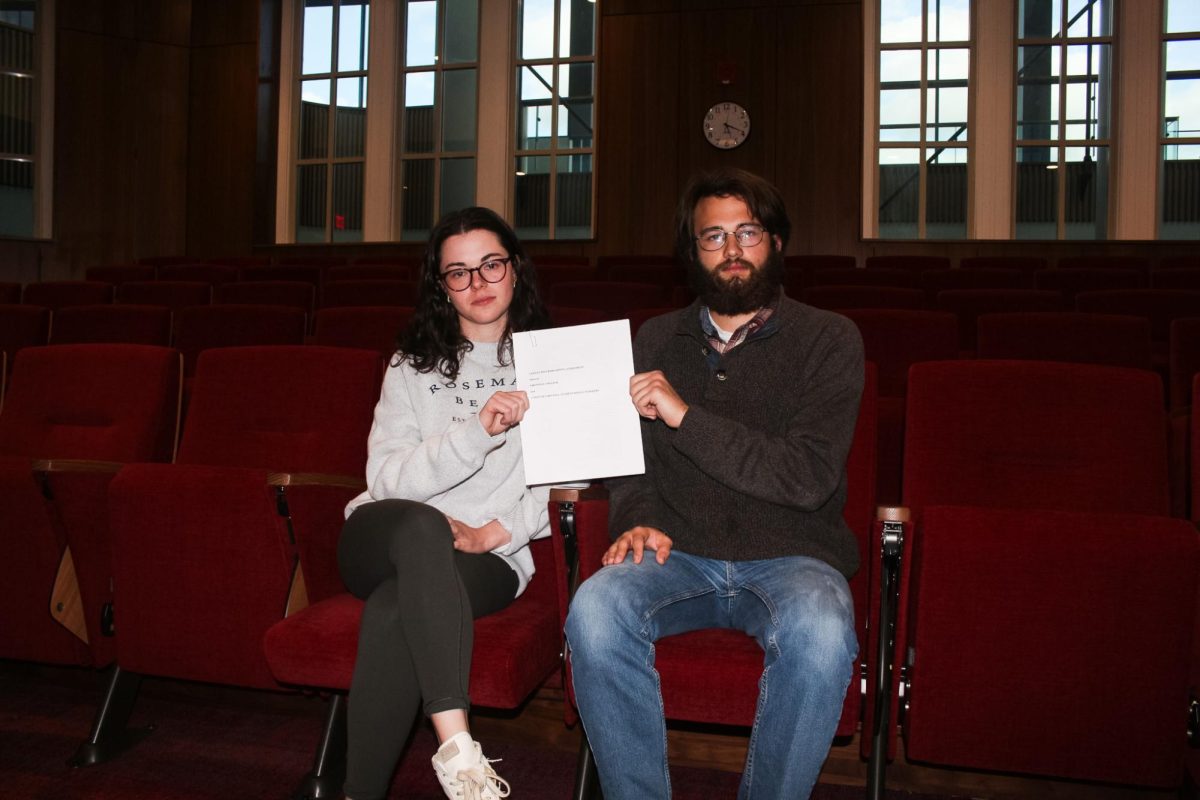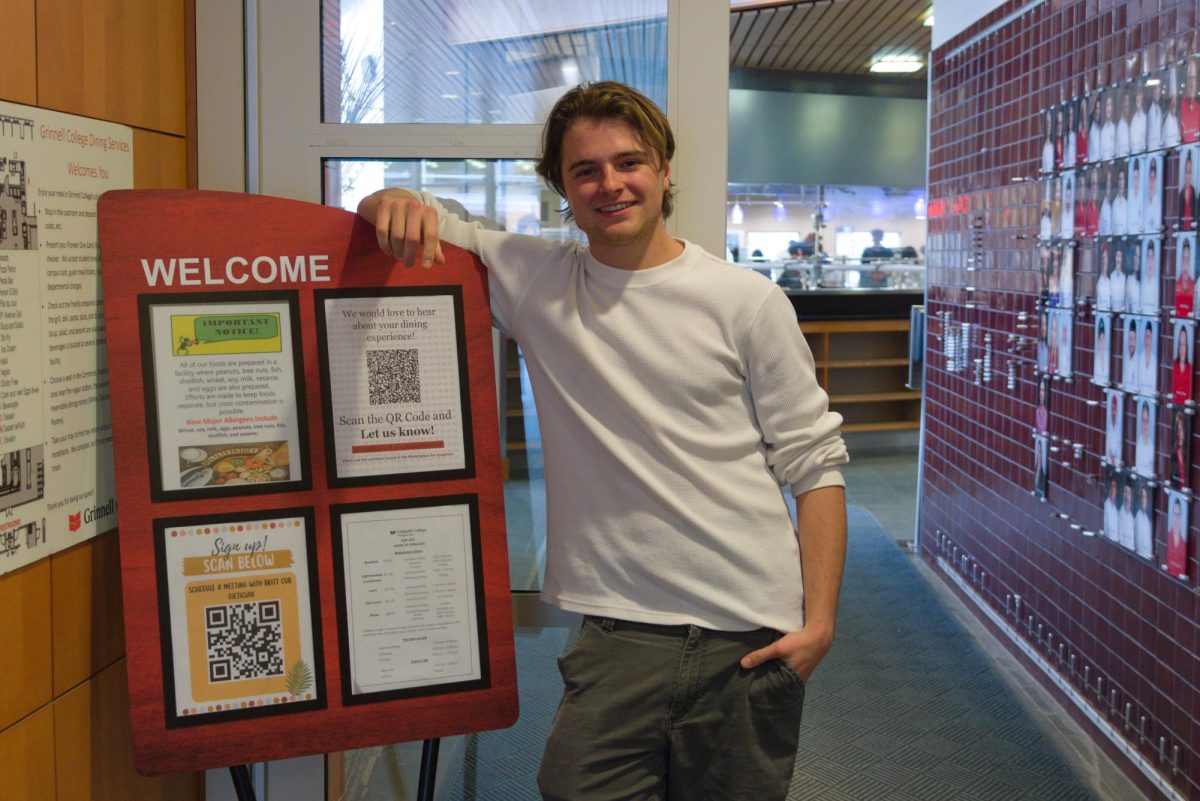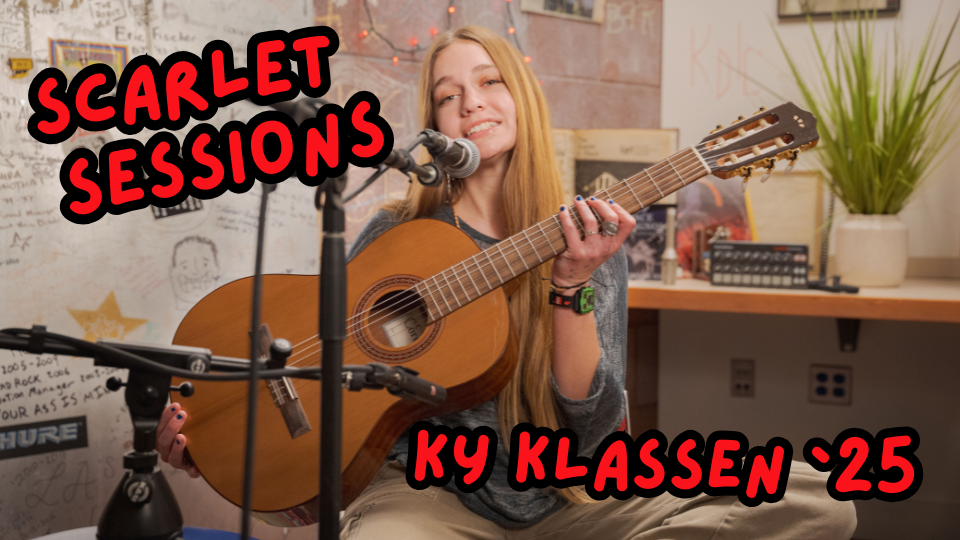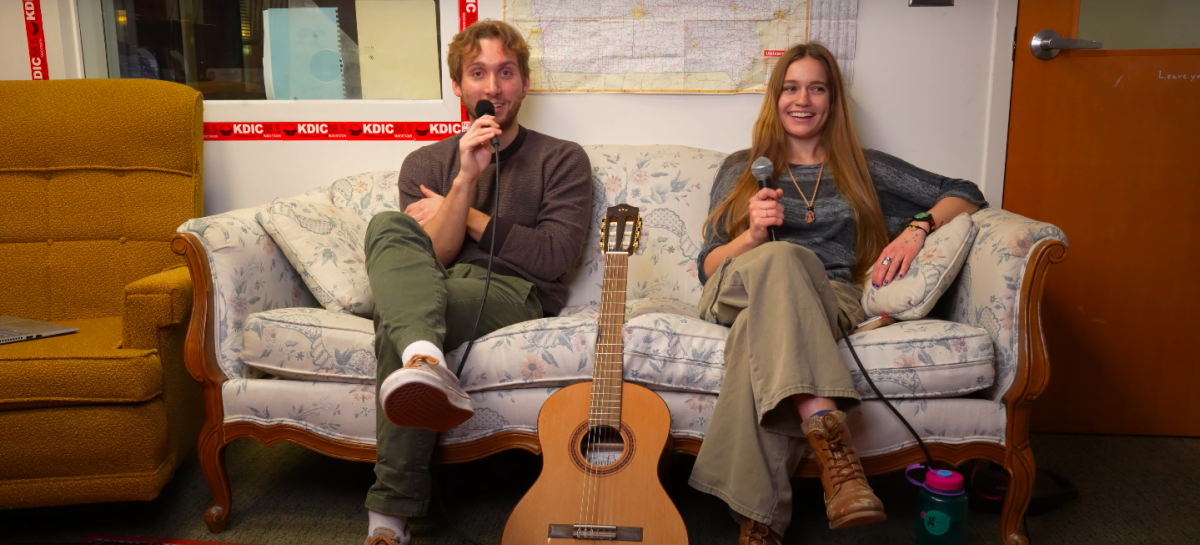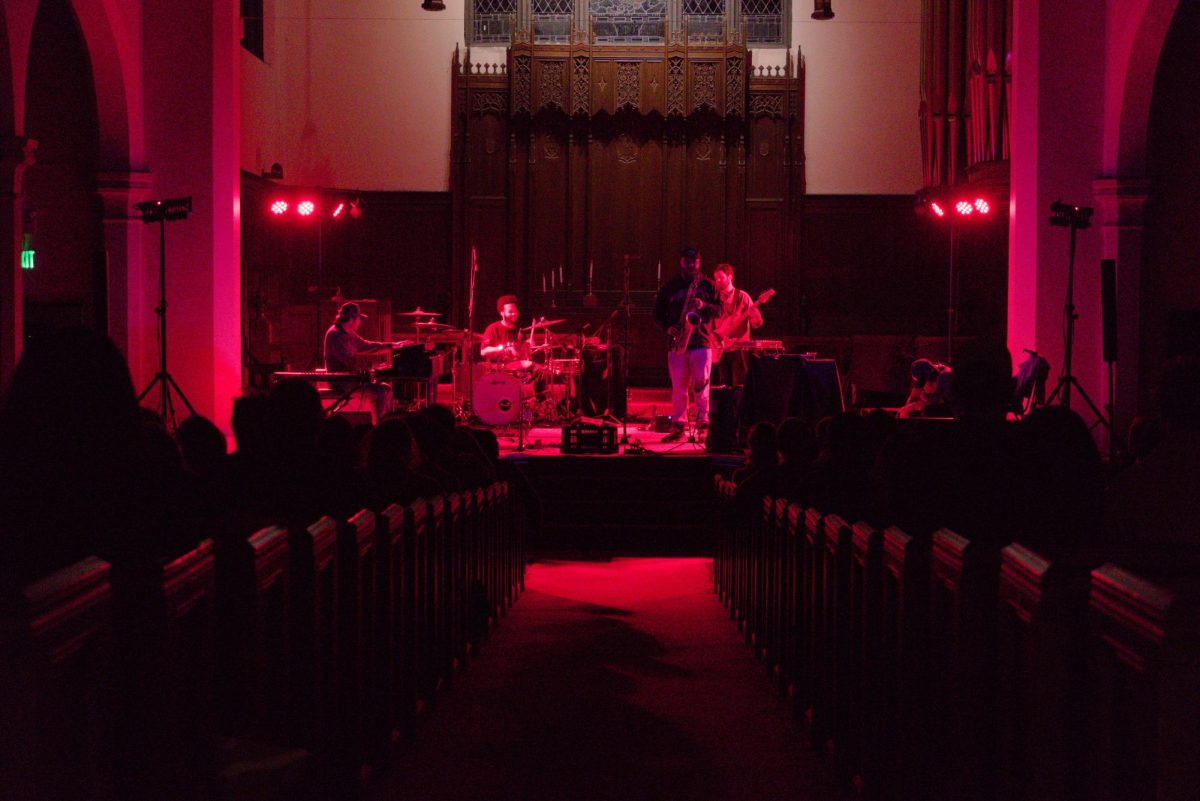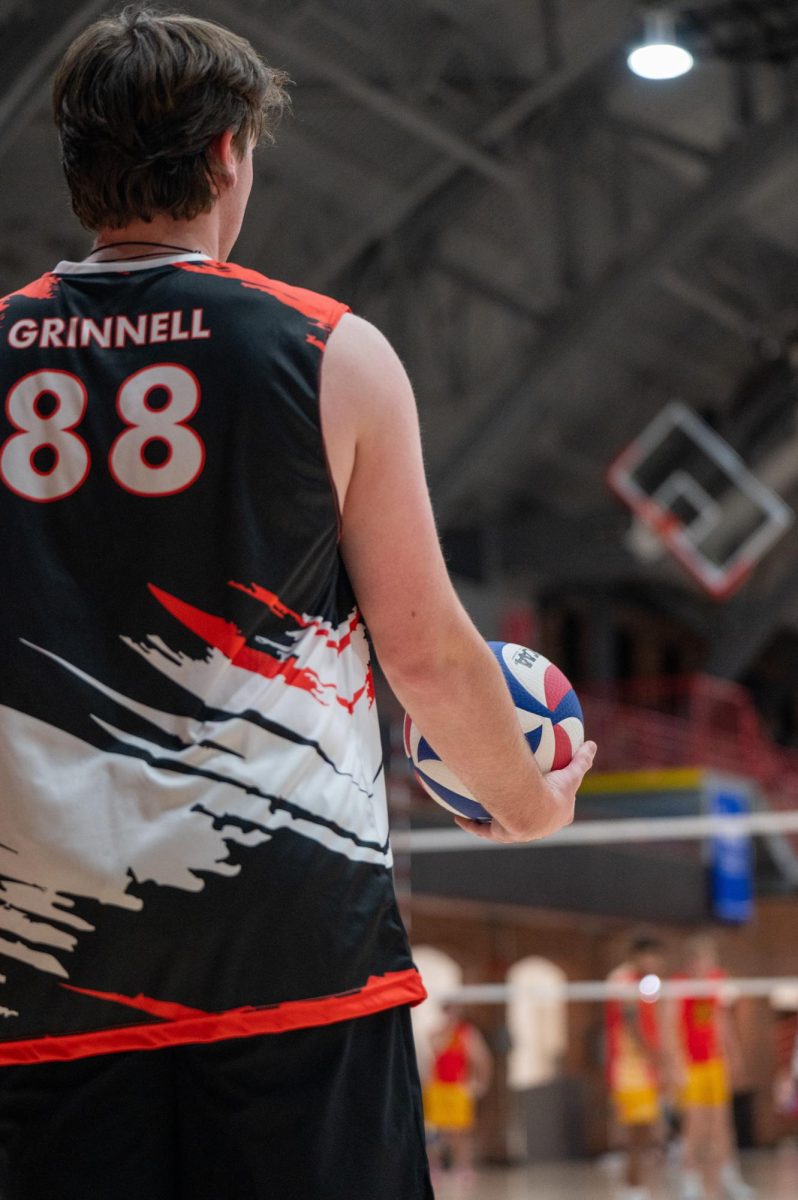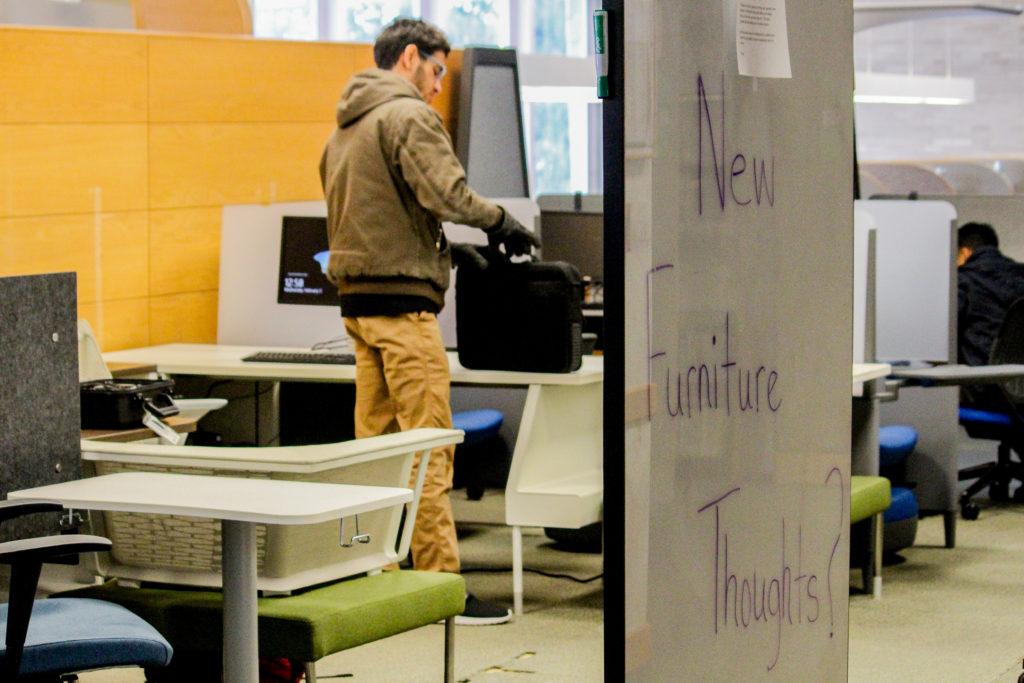Visitors to Burling Library’s second floor over the next few weeks may be surprised to find a new arrangement of multicolored furniture between the two main staircases. Surrounded by whiteboards filled with student feedback, the display is intended as a test for several new potential types of furniture to replace the second floor’s old study carrels.
Micki Behounek, manager of access services at Grinnell, and Associate Professor and Librarian of the College Mark Christel both said that the purpose of the new furniture will be to improve accessibility on the second floor of the library. The current study carrels on that floor, which include multi-tiered carrels that must be accessed via stairs and linearly organized carrels with narrow entry points, have multiple issues relating to their physical accessibility.
The purpose of the furniture demo on the second floor is to allow students to try out different designs for a longer period of time than is generally permitted by companies’ sample-loan schedules. Usually, test periods are around a week, but all three companies who produce the furniture on display (KI, Herman Miller, and Steelcase) have given Grinnell the samples for several weeks.
The idea behind the extended demo, according to Christel, was to allow people to “sit at [the furniture], but also actually work at it, and see how it does or doesn’t work for them.” The current location of the demo furniture will not be its actual location once a model is chosen, and the computers that usually reside in that area will be returned once the loan period is over.
Behounek and Christel hope to discuss student feedback more directly in focus groups in the future before selecting the final furniture. The whiteboards next to the display are erased periodically to allow new comments to accumulate, according to a sign explaining the purpose of the demo furniture, but everything written on them is recorded in order to keep track of students’ concerns about the options. In typical Grinnell fashion, comments currently on the boards range from scrawled bulleted lists of detailed thoughts (“too sterile”, “the Sayl chair is very comfortable!”, “plugs poorly placed”), to the simpler sentiment “joyless and neoliberal”, written neatly in purple Expo marker.
Some student concerns may have more weight than others; for example, the bright blue upholstery fabric of the Steelcase chairs, which has attracted many comments on the whiteboards for clashing with the building’s color scheme, was actually determined by the company and, according to Behounek, “We would never choose that color anyway, … but beggars can’t be choosers when free furniture is coming.”
However, some feedback will require extensive discussion, such as the popularity of an adjustable-height desk that can convert to a standing workspace. Burling currently has multiple unconventional desks on the first floor, including standing desks and desks with stationary bicycles underneath, but they generally see little use. As a result, the focus groups will serve to find out if there are specific locations that would be more effective to place items like the adjustable desk so that students would use them more frequently.
Behounek and Christel urge students to try out the furniture as a real study space to see which kind works best for them. Christel said, “I don’t see people settling in there too much, and I wish students would feel comfortable sitting there longer – you know, just camp out there for two hours some night. I would love to see that.”
